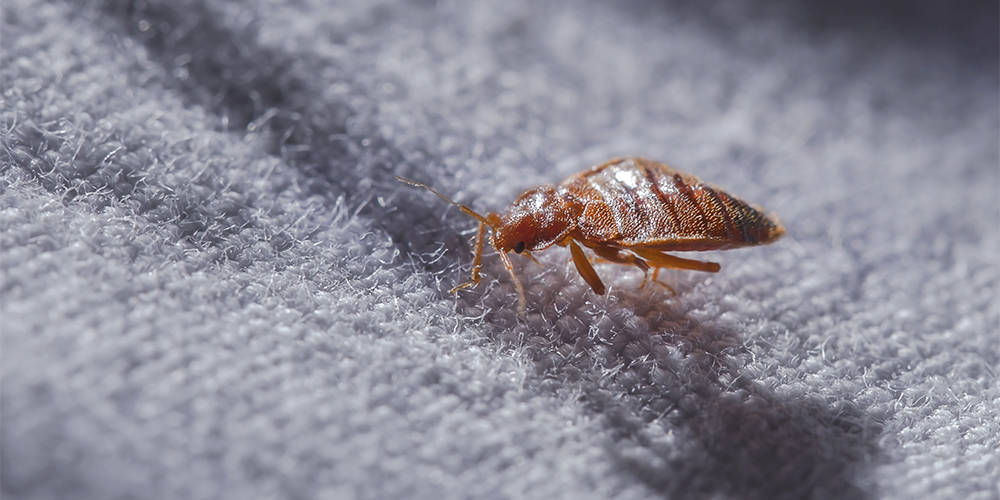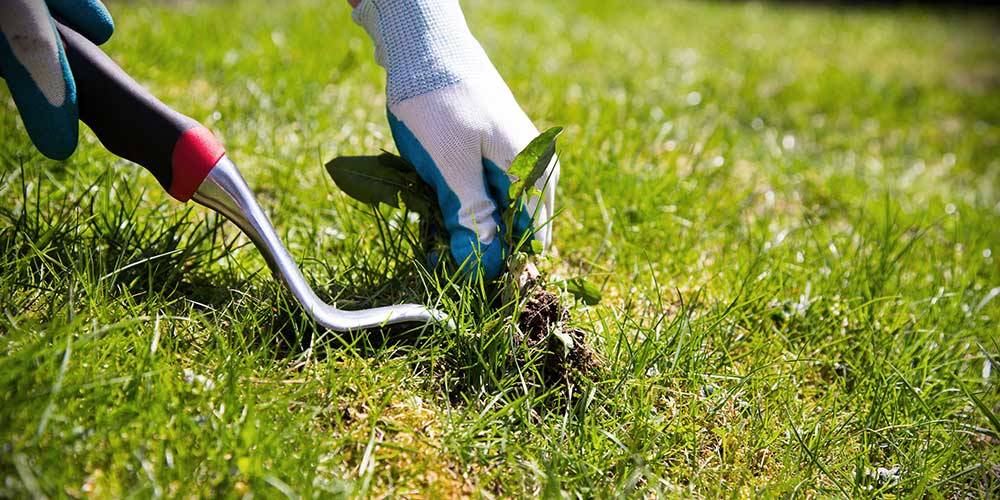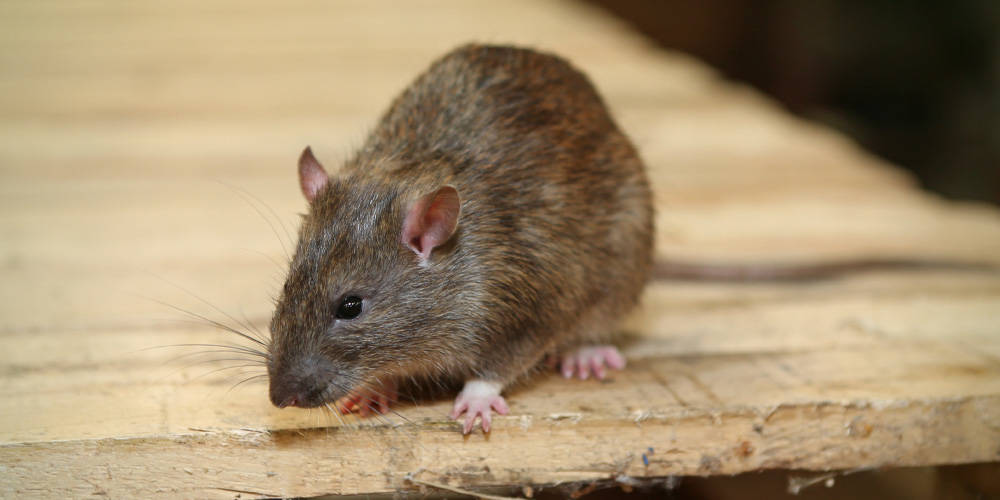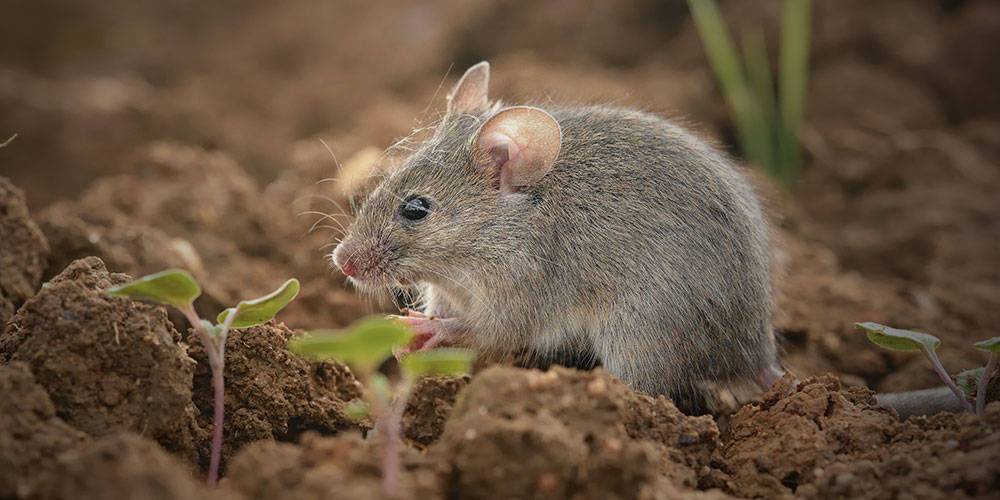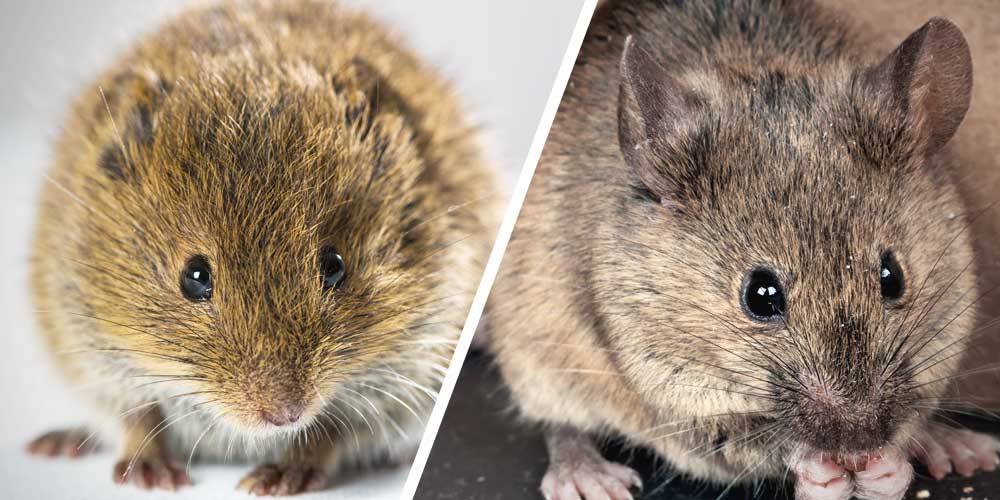How to get rid of japanese beetles
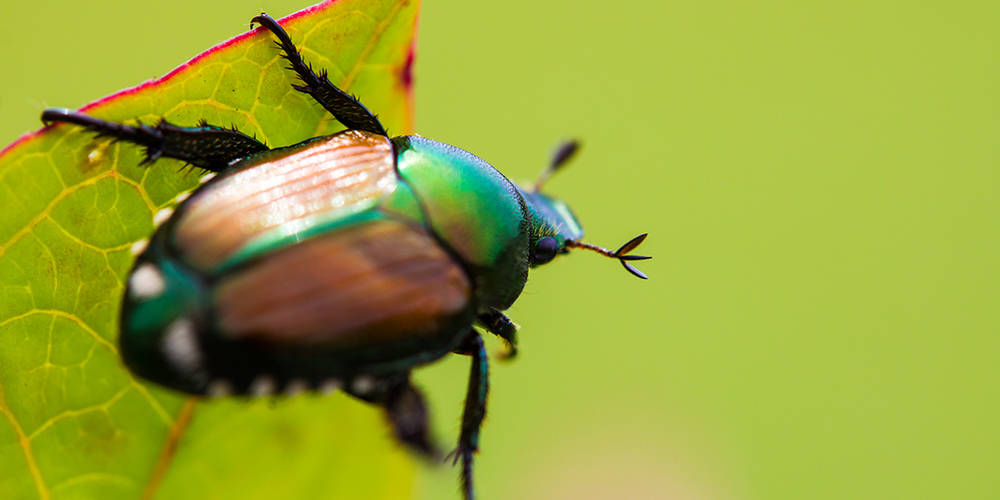
Japanese beetles are truly a double threat pest for homeowners: both to their lawns and to their trees and plants. The larvae feed on lawn roots, effectively killing the grass, and later as it emerges from underground as an adult, it flies up and skeletonizes leaves of hundreds of types of plants.
The 1.2 cm (1/2 inch) adults are easy to identify with their metallic green abdomen and copper-coloured wings. If you don’t see them, their evidence is obvious with the attacked leaves looking like lace, because the pest consumes only the green tissue between the veins of the leaf.
Where we found Japanese beetles?
Japanese beetles are seen mostly in Eastern Canada: southern Ontario, southern Quebec, New Brunswick, Nova Scotia and PEI. They are considered a major pest for commercial growers and homeowners.
In BC, the Japanese beetle was spotted in Vancouver in 2017, and there has been a concerted effort by the province to trap and eliminate the pest before it could establish a presence there.
Lifecycle of the Japanese beetle
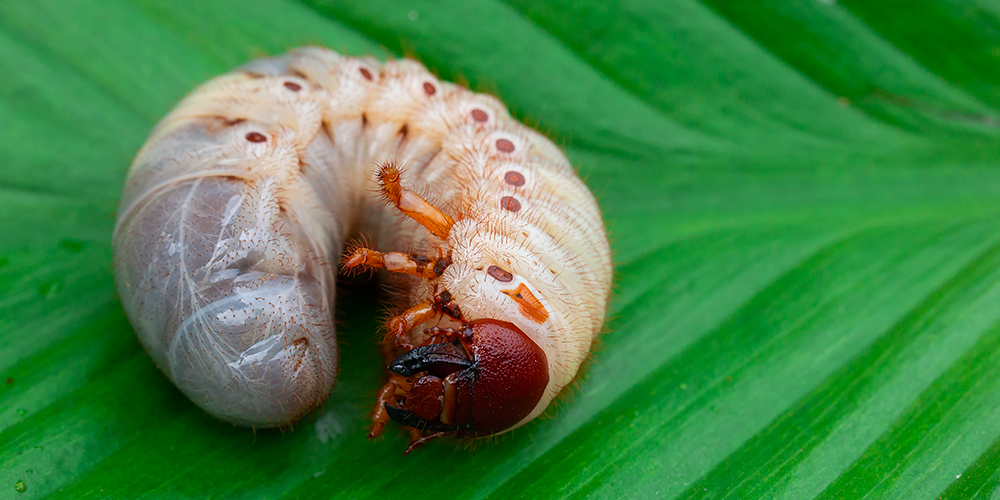
Japanese beetles overwinter in the larval stage (grubs), deep in the soil and they begin to work themselves near the surface when the soil temperatures rise in the spring. The grubs start to feed again, chewing on the grass roots of your lawn, as they did last fall before the winter. If the grub population is high enough, you’ll see patches of dead grass appear.
They continue feeding into June and eventually stop and pupate. They emerge as adult beetles usually in early July. The adults begin looking for plants to eat and initiate mating right away. Japanese beetle females will lay up to 60-80 eggs in your lawn, 5-10 cm deep, one egg at a time. The adult Japanese beetle will live only 30-45 days.
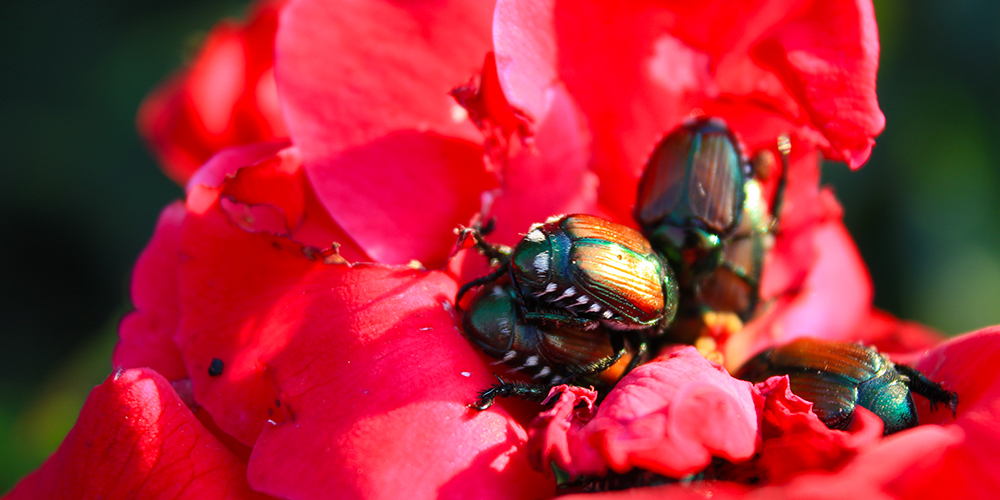
Considering that their lifecycle is 12 months, almost all of it, except for 1 ½ months, is in the larval stage. These summer-laid eggs will hatch within 2 weeks and the young larvae will start to feed on grass roots and continue feeding on them into the fall.
As the soil temperatures drop, so do the larvae. They go deep underground to get away from the cold, only to emerge the following spring.
Which plants are victims of beetles?
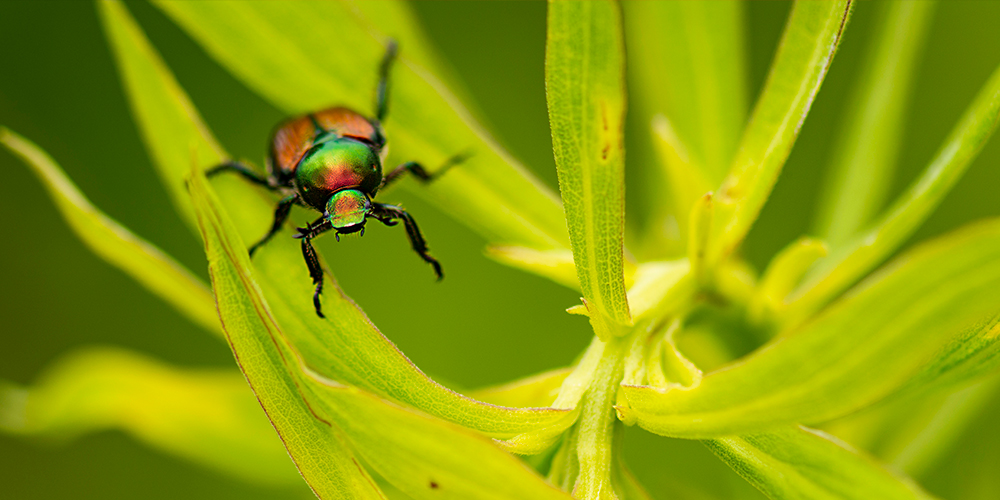
The adult Japanese beetles are known to feed on more than 300 species of plants. To make matters worse, they feed in groups, usually starting at the top of the plant, and working their way down.
Plants that have been injured by the Japanese beetle give off a scent that attracts even more beetles, compounding the problem. This group feeding behaviour is what causes the devastation to the plant or tree. Japanese beetles are very mobile and can infest new areas from several kilometres away.
The beetles have a habit of leaving the trees/plants daily, returning to hide in the soil every evening and coming back out every sunny morning. They tend to stay in the soil if it is raining.
How do you control them?
In Canada, there are only a few options available.
In the grub stage:
- You can apply Wilson GRUB OUT Nematodes in the early spring when the grubs are near the surface (May) and again in late summer/early fall when the new hatches are near the surface and easier to control.
- To discourage egg laying, keep your lawn cut high, as the female adult beetles prefer to find egg laying sites in shorter cut grass.
- Patch and repair the bare patches caused by the grub with good lawn soil and with insect-resistant grass seed such as PRO-MIX Weed & Insect Defense Grass Seed. This type of grass seed contains a natural insect repellent, a naturally occurring fungus called endophytes.
- Keep your lawn in good shape with regular fertilizing. A healthy lawn can withstand the attacks better than a thin, weak lawn.
In the adult beetle stage:
- Handpicking is often done to reduce the population of the beetles. Go out with a can with soapy water in the morning when they are a little slower and easier to pick off. Drop them in the can and after collecting, flush them down the toilet.
- If you start the handpicking early in the season, you can thwart the scents released that attract others for their group feeding habit.
- Traps are also used. Wilson BUG-X OUT Japanese Beetle Trap is very good at attracting and trapping adult beetles. Under favourable conditions, a trap will capture 75% of the beetles that approach it. It is recommended to place the traps at the borders of your property, away from plants that beetles may harm.
There are few pesticides still available. You can spray the Japanese beetles with Wilson BUG-X OUT Insecticide-Miticide with 50% Malathion and repeat as necessary. Follow directions on the label.
The various larvae that threaten Canadian lawns
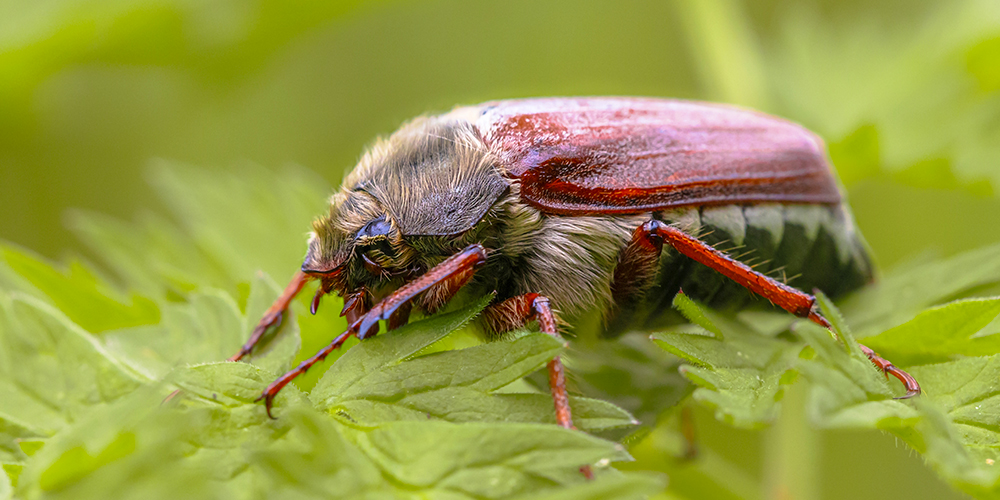
In Canada, you’ll find that there are several larvae (grubs) feeding on lawn roots.
These larvae have different parents. The June beetle is a large black or brown beetle that emerges in June, the European chafer is a smaller version of the June beetle, and the Japanese beetle has a green and copper colour.
All these beetles lay eggs in lawns and all their larvae chew on grass roots. Grubs in high numbers will kill the grass, and usually lead to secondary damage from skunks, raccoons and birds tearing at the lawn looking for the tasty treat.
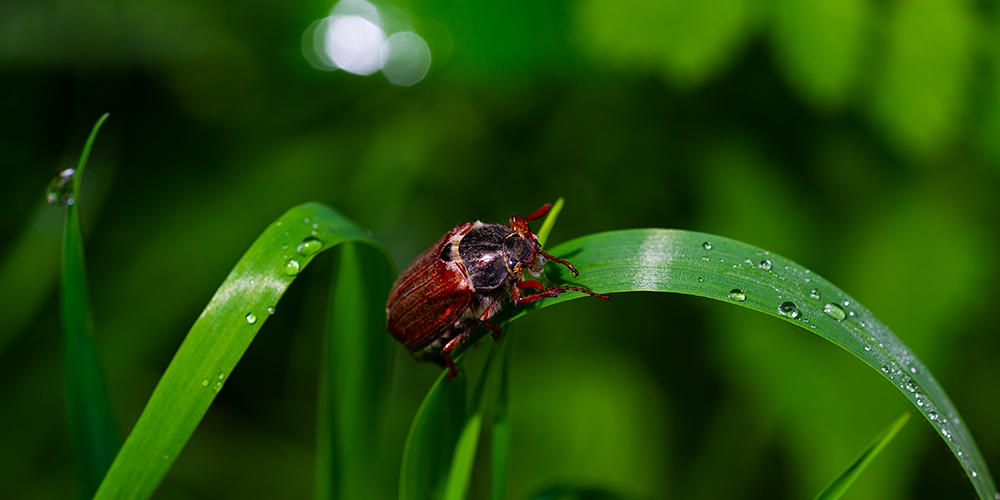
The European chafer and Japanese beetle have a 12-month lifecycle, whereas the June beetle has a 2-year lifecycle, mostly in the grub stage.
What is the role of nematodes
In all three cases, Wilson GRUB OUT Nematodes can control the grubs. These nematodes are microscopic worms and are considered a biological control rather than a pesticide. They are kept in suspended animation until mixed with water in a sprayer. Once watered into the lawn, they will seek out all three types of grubs and attach themselves to them, infecting them with a bacterium that is only harmful to grubs.

